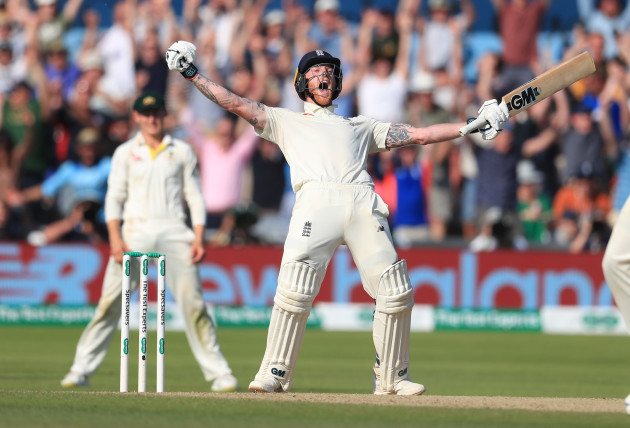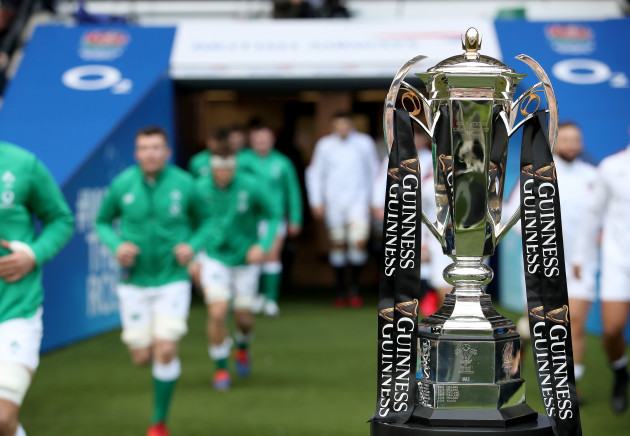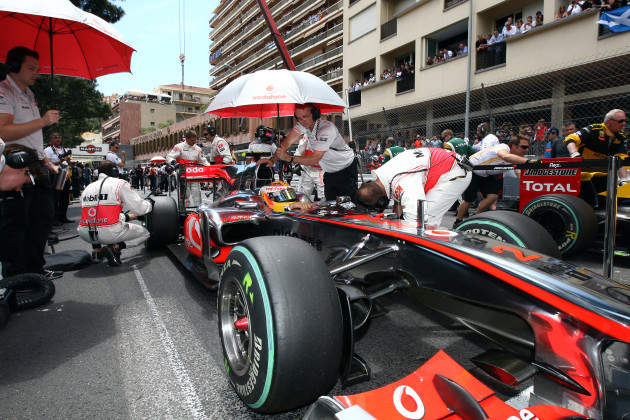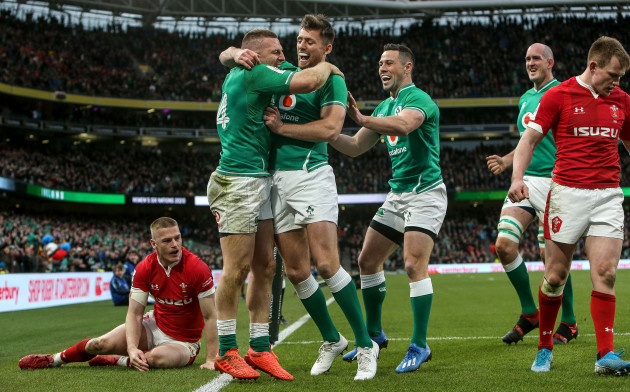BACK IN 2005, the fourth Test of cricket’s Ashes series between England and Australia recorded a huge peak audience of 8.4 million on the free-to-air Channel 4.
Essentially, at one stage during that series, 50% of people watching TV in England at the time were tuned into the Ashes.
But even as that titanic series was concluding with a stirring English victory, the England Cricket Board [ECB] had already signed a lucrative deal with Sky Sports that would take cricket behind a TV paywall right through to this day.
The viewing figures for the Ashes series, and England’s Test cricket, dropped off a cliff thereafter.
As Sean Ingle pointed out in the Guardian in 2015, one of that year’s Ashes Tests barely managed to draw a bigger audience than a 1974 episode of Columbo shown on ITV3 at the same time.
Cricket’s popularity in England declined without free-to-air coverage of the national team and the effects are still being felt. While Sky has pumped money into the sport, the ECB has regularly faced criticism for not growing the game, with participation numbers regressing notably along with the TV audiences.
Tellingly, last year saw Sky Sports agree for Channel 4 to show England’s World Cup final against New Zealand. This was the first time since 2005 that free-to-air TV viewers were able to watch England’s cricketers live.
Channel 4 recorded a peak audience of 5.2 million, as fans thrilled in England’s victory over the Kiwis. It was a glimpse of what many of them are missing, with cricket still otherwise behind its paywall with Sky.
In all of this is a lesson for the Six Nations as the prospect of fans losing free-to-air access to rugby’s self-professed ‘greatest championship’ looms.
The Six Nations may well still be great in the future, but the reality is that vastly more people will watch a sport, engage with it, perhaps even fall for it and start playing or paying to go to games, if it’s free to watch on TV.
The Six Nations is a special beast because it transforms an otherwise somewhat niche sport into one that becomes headline news within its participating nations.
People who are otherwise disinterested in rugby – barring the quadrennial World Cup – genuinely focus on the oval-ball sport during the Six Nations.
Some of them become genuine rugby supporters. We all have examples of this kind of convert in our lives. Exposure to games has been key.
The danger for the Six Nations is losing access to this wider audience by going behind a paywall, whether that’s with Sky Sports, BT Sport, or perhaps even an outsider like Amazon.
We’ve been here before in Irish rugby, albeit on a smaller scale. The Heineken Cup used to be shown live on RTÉ but Sky Sports won the exclusive Irish rights and brought it behind the paywall at the start of the 2006/07 season.
As Paul Rouse outlines in an excellent 2012 paper on ‘The Impact of Pay-TV on Sport,’ a direct comparison between Leinster’s Heineken Cup quarter-final away to Wasps in 2006 and their quarter-final away to Toulouse in 2007 highlights what happened next.
255,000 people watched the 2006 match on RTÉ, but just 47,000 watched Leinster’s quarter-final on Sky in 2007.
Again, the point here is clear – the viewing figures will drastically drop by taking the Six Nations away from free-to-air stations.
Some would argue that interest levels in the Heineken Cup have declined as it has morphed into the Champions Cup in more recent years and it has been interesting to see EPCR successfully push to bring back some free-to-air coverage.
The idea here is to provide exposure to a wider audience but also to lure some viewers into realising they need to pay for a subscription channel to watch this competition, but the measure hasn’t been an unqualified success.
Virgin Media did get to screen two Leinster pool games – and one of Ulster’s – live this season but they also had the two Saracens v Ospreys fixtures, which were obviously not going to draw a big audience on these shores.
Virgin [and Channel 4 in the UK] will also show Ulster’s quarter-final clash away to Toulouse but there is little doubt the Irish broadcaster would love to have screened Leinster’s Saturday evening clash with Saracens too.
Of course, tournament organisers EPCR received more money from Sky back in the day and get crucial sums from sole tournament broadcaster BT now – and that’s a hugely important consideration in all of this.
It’s a major factor that shouldn’t simply be dismissed.
At present, rugby is relatively cash-strapped. It is not the mega-rich world other global and American sports have become, and the unions who make up the Six Nations could certainly benefit from having more money, which they could in turn sink into growing the game in other ways than having a huge audience watching their national teams.
Going with a subscription-based broadcaster like Sky or BT will certainly provide far, far more money than their free-to-air rivals can.
The likes of RTÉ and Virgin Media here in Ireland, as well as the BBC in the UK, simply cannot compete with broadcasters like Sky and BT when it comes to cold, hard cash.
So what of the possibility of the Six Nations rights potentially being split between a paywalled subscription broadcaster and free-to-air channels?
There is some chance of this, with the UK Times’ Owen Slot reporting that the Six Nations fixtures – 15 of them each year – may well be split into three tranches of five games each, with the top tranche composed of the most mouthwatering fixtures and the bottom tranche of the least attractive games.
That makes sense on one level, but would Virgin Media or RTÉ here in Ireland really want to be stuck with four fixtures like Scotland v Italy as well as possibly just one of their home nations’ games? It doesn’t sound like the most attractive package.
And the frustration for broadcasters like Sky, who have previously made huge investments in rugby before dipping out of it in more recent times, has been the bitty nature of purchasing rights to the various competitions.
We’ve actually seen the Six Nations recognise this by announcing that its six member unions have agreed to unify their media rights for all November Tests, the men’s Six Nations, women’s Six Nations, and the U20 Six Nations.
This is the strategy that has been dubbed ‘Project Light’ and it will certainly have been welcomed by the broadcasters, who will no longer have to negotiate all of these deals separately.
Again, this doesn’t necessarily mean that one broadcaster will take onboard all November Tests, men’s Six Nations, women’s Six Nations, and U20 Six Nations rights in one fell swoop, but there is certainly more appeal to do so now.
But if all of this rugby is to go behind a paywall, supporters would certainly welcome being able to pay just one subscription fee for access to a genuine ‘home of rugby’ that covers most bases.
Which brings us to the part private equity firm CVC has to play in all of this, which simmers beneath everything we have touched on so far.
CVC – which is set to buy a 15% share in the Six Nations for around £300 million – is in the money-making business and it’s clear and obvious that they will prioritise that within any decision-making.
Having already bought a 27% stake in the English Premiership, the private equity firm is also widely believed to have agreed in principle to take over 27% of the Pro14.
So CVC is evidently going to have a big say in the future of the sport on a number of levels. The firm’s previous work includes turning a gigantic profit by investing in Formula One and putting it behind a TV paywall.
Crucially, though, it’s understood CVC’s stake in the Six Nations will essentially make them something akin to the seventh member union when it comes to making media and TV rights decisions.
The firm has proven expertise in making a lot of money so it’s obvious the six existing unions will listen when advice is being given.
But, if it is the case that CVC is not making the final decision, the Six Nations needs to consider that fine balance between making more money and keeping the championship available to the big audience that free-to-air broadcasters provide.
While there is well-deserved nostalgia for Sky’s rugby coverage and no doubting that BT are doing a superb job of giving us polished, insightful broadcasts right now, many of us will have genuinely fallen in love with the game through watching the Six Nations or seeing some of those early Heineken Cup days on free-to-air TV.
Many of the key decision-makers in the member unions of the Six Nations appreciate that keenly and it’s vital that they remember it as this decision-making process unfolds.
And, of course, things have changed since those days. Streaming is an increasingly important part of the picture and will come into play in whatever ‘TV’ rights deal is agreed. The modern rugby supporters wants digital ease of access.
One final last point is the potential role of governments in this. As things stand in Ireland [and the UK], the Six Nations is not on the protected list of sporting events that is required to be screened live on free-to-air stations.
Ireland’s games at World Cups are protected here, but the Six Nations being absent from the list – when home and away qualifying and tournament ties in football’s European Championship and World Cup are on it – is to the bemusement of many supporters.
With the IRFU in receipt of government funding, many would argue that the Six Nations should be protected.
So clearly there are many, many strands to this. It’s also clear that there is road ahead in this process, with submissions from broadcasters for the so-called ‘tender package’ be submitted before March 14, with the new deal set to kick in from the 2022 Six Nations onwards.
A huge, wide-reaching decision in the future of the sport lies ahead.





